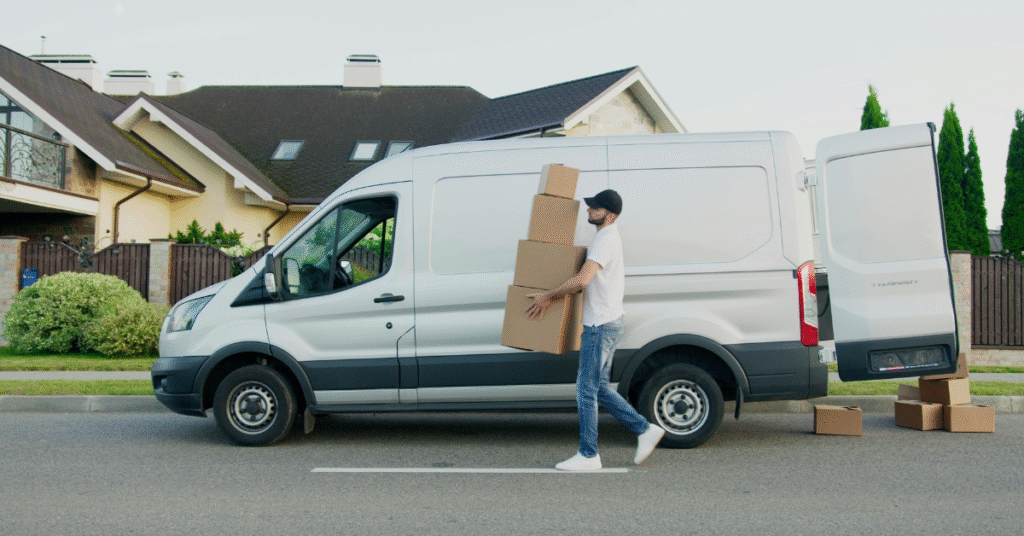Currently Empty: $0.00
Need to Move in a Hurry? 10 Tips for a Last-Minute Move
Moving is one of life’s most stressful experiences, and when you’re faced with the need to relocate on short notice, it can feel even more overwhelming. Whether it’s due to a sudden job change, an unexpected lease termination, or any other urgent reason, the pressure to get everything packed and moved quickly can be intense. However, with the right approach and strategies, you can manage a last-minute move efficiently and minimize stress.
In this comprehensive guide, we’ll walk you through 10 essential tips to help you handle a last-minute move with ease. Each tip is designed to streamline the process, make your move as smooth as possible, and ensure that you arrive at your new home ready to settle in comfortably.
1. Stay Calm and Focused
Maintain a Calm Mindset
The first and perhaps most crucial step in managing a last-minute move is to stay calm and focused. It’s easy to feel overwhelmed when faced with the task of packing up your entire home on short notice, but keeping your composure will help you handle the situation more effectively.
When panic sets in, it can cloud your judgment and lead to mistakes that might cost you time and energy. Take a moment to breathe deeply and remind yourself that while the situation is challenging, it is manageable. A calm and collected mindset will enable you to think clearly and make better decisions throughout the moving process.
Create a Plan of Action
To avoid feeling overwhelmed, start by creating a detailed plan of action. Write down every task that needs to be completed, and break them down into smaller, manageable steps. Prioritize these tasks based on their urgency and importance. For instance, securing moving supplies might be your first priority, while packing non-essential items can come later.
Having a structured plan will help you stay organized and focused. Set specific goals for each day, and tackle one task at a time. This approach will make the process feel less daunting and more manageable, allowing you to work efficiently and stay on track.
2. Declutter and Prioritize
Simplify Your Belongings
When you’re moving on short notice, it’s crucial to simplify your belongings to make the packing process quicker and more efficient. Moving is a perfect opportunity to declutter and evaluate what you really need.
Start by going through each room and sorting your items into four categories: keep, donate, sell, and discard. Be ruthless in your decisions. If you haven’t used an item in the past year, it’s probably something you can live without. This is especially important in a last-minute move when time is of the essence.
Donate, Sell, or Discard
For items that are still in good condition, consider donating them to charitable organizations. Many charities will even pick up donations from your home, which can save you time and effort. Alternatively, you can sell valuable items online or through a garage sale to make some extra money to help cover moving expenses.
For belongings that are worn out or no longer useful, don’t hesitate to discard them. The goal is to lighten your load as much as possible. The fewer items you have to pack, the easier and faster your move will be. By decluttering, you can focus on packing only the items that are essential and important to you.
3. Gather Supplies Quickly
Collect Essential Supplies
Once you’ve decluttered, the next step is to gather all the necessary moving supplies. In a last-minute move, time is of the essence, so aim to collect all supplies in one trip rather than making multiple trips to the store.
Your checklist of essential supplies should include sturdy boxes, packing tape, bubble wrap, packing paper, markers, and moving blankets. Don’t underestimate the number of boxes you’ll need; it’s better to have too many than too few. Different sizes of boxes can be useful for various types of items.
Utilize Available Resources
In addition to purchasing supplies, look around your home for items you can use as packing materials. Towels, blankets, and sheets can be used to wrap fragile items like dishes and glassware. This not only saves money but also reduces waste. Laundry baskets and suitcases can be used for packing clothes and other soft items.
Check with local stores, friends, or neighbors for any spare boxes they might have. Grocery stores, liquor stores, and bookstores often have sturdy boxes they’re willing to give away. Utilizing these resources can help you gather the supplies you need quickly and efficiently.
4. Pack Room by Room
Organize Your Packing
To streamline the packing process, focus on one room at a time. Packing room by room helps you stay organized and ensures that nothing gets left behind. It also simplifies the unpacking process, as you’ll be able to quickly identify which boxes belong in which rooms.
Start with rooms that are used less frequently, such as guest bedrooms, storage areas, or the basement. These spaces usually contain items that you don’t need immediately, allowing you to get a head start without disrupting your daily routine.
Label Boxes Clearly
As you pack, label each box with its contents and the room it belongs to. For example, a box containing kitchen items should be labeled “Kitchen – Pots and Pans.” If you’re short on time, use colored stickers or labels to quickly identify which boxes go where. Assign a specific color to each room and place the corresponding sticker on each box.
Labeling helps ensure that movers place boxes in the correct rooms and makes it easier to find items when you start unpacking. Additionally, consider creating an inventory list of the contents of each box. This can be as simple as noting down the main items or taking photos of valuable items before packing.
5. Be Resourceful
Utilize What You Have
In a last-minute move, you might not have time to gather all the traditional packing materials. This is where creativity and resourcefulness come into play. Look around your home and think about what items you can repurpose as packing materials.
For example, use towels, blankets, and clothing to wrap fragile items like dishes and electronics. This not only saves you money but also helps reduce waste. Pillows and cushions can be used to cushion larger items, preventing them from shifting during transport.
Suitcases, duffel bags, and backpacks are perfect for packing clothes, shoes, and accessories. These items are designed to carry weight and are often more convenient than boxes. Reusable shopping bags can be used to pack smaller items or items you’ll need quick access to, such as toiletries or snacks.
Think Outside the Box
Even garbage bags can be useful in a pinch. Use them to quickly pack up soft items like bedding, stuffed animals, or towels. Just be sure to label the bags clearly so they’re not mistaken for trash during the move. The goal is to use whatever resources you have on hand to make the packing process as efficient as possible.
6. Ask for Help
Enlist Support
Moving is a big job, and trying to handle it all on your own can be overwhelming, especially when you’re on a tight timeline. Don’t hesitate to ask for help. Friends and family members can be invaluable in assisting with packing, loading, or even watching your pets or children.
Reach out to people you trust and let them know you could use their help. Most people understand the stress of moving and will be happy to lend a hand if they can. Providing some refreshments and snacks can also make the experience more enjoyable for those helping you.
Consider Professional Movers
If your budget permits, opting for professional movers can be a substantial time-saver. Many moving companies, including the best residential local movers in Arlington, TX, offer last-minute services and can handle moves on short notice. Experienced movers excel at packing and transporting belongings efficiently, which can alleviate much of the stress associated with moving.
When selecting movers, it’s crucial to choose reputable and dependable ones. Check reviews, verify their licensing and insurance, and request a written estimate to prevent unexpected expenses. Although last-minute moving services may incur additional fees, the convenience and efficiency they provide can make the investment worthwhile.
7. Pack an Essentials Box
Prepare a Survival Kit
An essentials box is crucial for ensuring you have everything you need during the first few days in your new home. This box should contain items you’ll need immediately and can include toiletries (like a toothbrush, toothpaste, soap, and shampoo), a change of clothes, medications, and important documents.
Think of the essentials box as your survival kit for the move. Include basic kitchen supplies such as plates, utensils, a can opener, and a coffee maker. Don’t forget chargers for your electronics and any personal items that will help you feel comfortable and settled.
Stay Comfortable During the Transition
In addition to the essentials box, pack a small bag with snacks, drinks, and anything else you might need for the journey to your new home. Moving can be physically demanding, and staying hydrated and nourished will help you maintain energy and focus.
8. Label and Inventory Your Boxes
Ensure Clear Labeling
Proper labeling and inventorying of your boxes are crucial for a smooth moving process. Clearly label each box with its contents and the room it belongs to. For instance, a box with kitchen supplies should be labeled “Kitchen – Pots and Pans.”
If you’re using a color-coded system, apply colored stickers to each box to indicate the room it belongs to. This helps movers know exactly where each box should go and makes it easier for you to find what you need.
Create an Inventory List
In addition to labeling, consider creating a simple inventory list. Note the main items in each box and keep this list in a notebook or on your phone. For high-value items, such as electronics or jewelry, take photos and make a note of their condition before packing. This documentation can be useful for insurance purposes if anything gets damaged or lost during the move.
Utilize Technology
Consider using moving apps or inventory management tools to keep track of your boxes and their contents. Some apps allow you to scan barcodes or enter details about each box, making it easier to stay organized and locate items quickly.
9. Consider Temporary Storage
Utilize Storage Solutions
If you’re struggling to pack everything in time, consider renting a temporary storage unit. This option allows you to move items in stages rather than all at once. It also provides flexibility if you need to downsize or sort through your belongings at a more leisurely pace.
Temporary storage can be particularly useful if your new home isn’t ready for move-in or if you need time to decide what to keep and what to discard. By moving non-essential items into storage, you can focus on settling into your new home without being overwhelmed by clutter.
Choose the Right Storage Unit
When selecting a storage unit, consider its location in relation to your new home. A unit that’s nearby will be more convenient for accessing your belongings when needed. Assess the size of the unit to ensure it can accommodate the items you need to store. It’s often better to choose a slightly larger unit to avoid overcrowding.
Organize Your Storage
Label and organize the boxes you place in storage. Place items you might need sooner near the front of the unit for easy access. Keep an inventory of what’s stored and where it’s located to streamline retrieval when needed.
10. Double-Check Everything
Conduct a Final Walkthrough
Before leaving your old home, do a thorough final walkthrough to ensure you haven’t left anything behind. Check all rooms, closets, cabinets, drawers, and storage areas. Don’t forget to inspect less obvious areas such as the attic, basement, and garage.
If you’re renting, take photos of the property’s condition before you leave. These photos can be helpful if there are any disputes with your landlord regarding your security deposit.
Confirm All Details
Ensure that all utilities (electricity, gas, water, internet) have been transferred to your new address or scheduled to be disconnected at your old address. Keep copies of all moving-related paperwork, including your lease or sale agreement, moving company contract, and receipts for any moving expenses.
Prepare for the New Home
Verify that your new home is ready for your arrival. Confirm the date and time with your movers, and make sure you have access to the keys. If you’re moving long-distance, double-check your travel arrangements and ensure you have all necessary documents, such as ID, tickets, and hotel reservations.
In Conclusion
A last-minute move is undoubtedly a challenging endeavor, but with careful planning and effective strategies, you can navigate the process with greater ease. By staying organized, being resourceful, and enlisting help when needed, you can manage your move efficiently and minimize stress.
Remember, the key to handling a last-minute move is to prioritize your tasks, simplify your belongings, and stay focused on the end goal of settling into your new home. Whether you’re moving across town or across the country, these 10 tips will help you manage your time and resources effectively, making your last-minute move as smooth and stress-free as possible.
By following these guidelines, you’ll be well-prepared to tackle your move with confidence and make the transition to your new home as seamless as possible.






